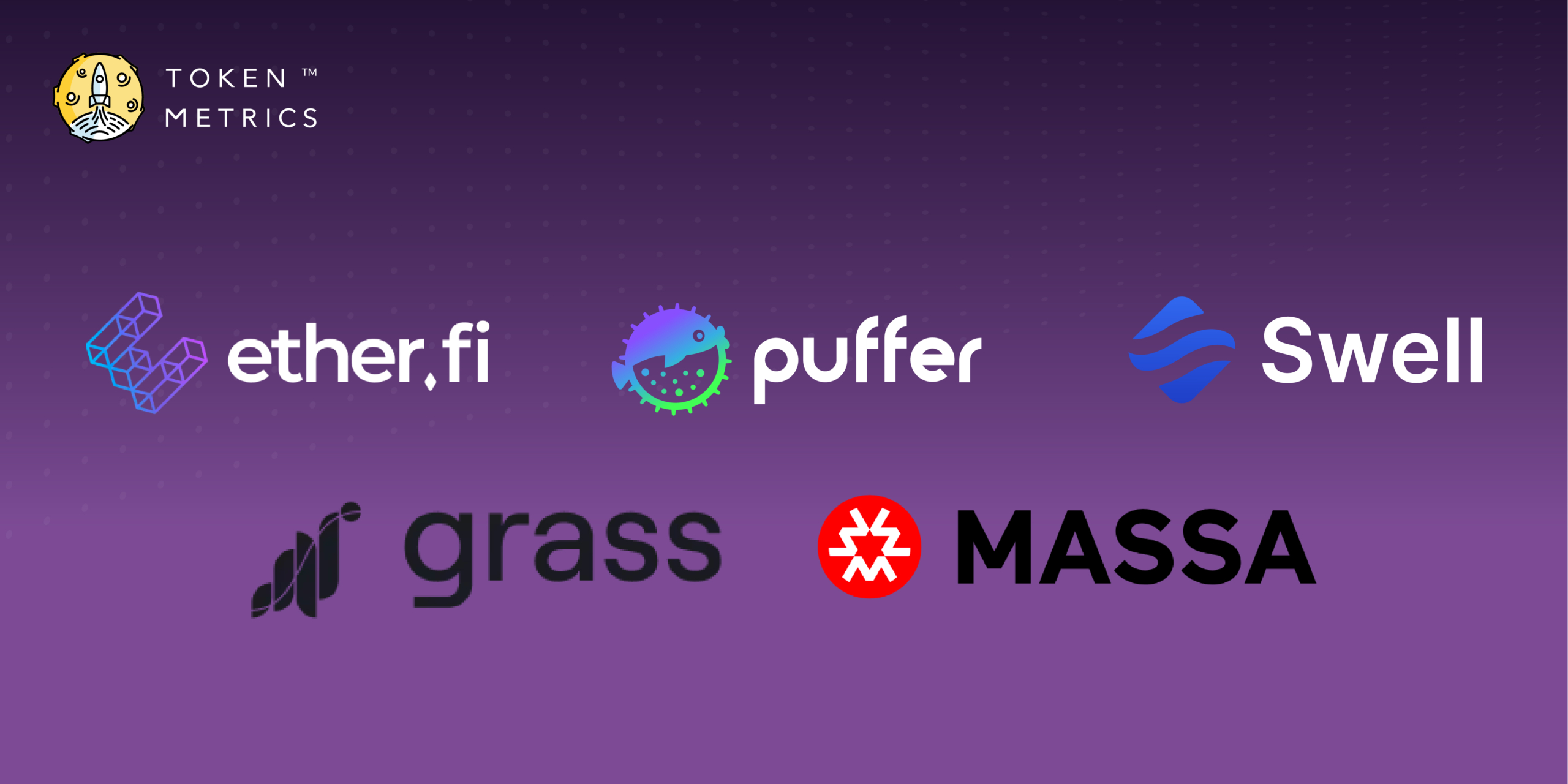TOKEN METRICS WATCHLIST
We scored many projects this week. Here are a few you should know about:
- ether.fi
- Puffer Finance
- Swell
- Grass
- Massa Labs
Please remember that some of these projects must still be subjected to our code review process. Still, we want to call them out here for preliminarily catching our eye based on our fundamental analysis process.
ether.fi – 70.83%
 Website | X(Twitter)
Website | X(Twitter)Sector – Liquid Restaking
Status – Active
TVL – $1.335B
ether.fi is a decentralized, non-custodial delegated staking protocol featuring a Liquid Staking Derivative token. A key feature of ether.fi is the empowerment of stakers, who maintain control over their keys. The protocol also facilitates the establishment of a node services marketplace, enabling stakers and node operators to enroll nodes to provide infrastructure services, with resulting revenues shared among stakers and node operators.
Under the ether.fi framework, stakers maintain control over their keys and retain custody of their ETH while delegating staking to a node operator, significantly reducing their risk exposure. Notably, ether.fi generates an NFT for each validator launched via the protocol. The Liquid Staking Derivative token, eETH, is minted from a liquidity pool that includes these NFTs. These NFTs manage the 32 ETH staked and contain metadata related to the validator, such as the client it operates, its geographical location, the node operator, and any associated node services. These NFTs can potentially be leveraged to create a programmable layer atop staking infrastructure, with anticipated enhanced capabilities through integration with EigenLayer in the future.
- Native Restaking – Native restaking in ether.fi offers increased freedom and potentially higher rewards, allowing users to earn staking and restaking yields through EigenLayer, leveraging their existing ETH holdings.
- Decentralization – Decentralization is a core focus of ether.fi, exemplified by Operation Solo Staker, aims to further decentralize Ethereum by launching nodes across diverse geographical locations.
- Control – A key feature of ether.fi is its emphasis on user control: it is the only protocol where stakers maintain control over their keys. This reduces the counterparty risk associated with node operators and the protocol itself.
- DeFi ecosystem – ether.fi fosters a thriving ecosystem around its native token, eETH, designed for use in decentralized finance (DeFi). The protocol is actively partnering with various DeFi projects to enhance the utility of eETH within the broader ecosystem.
Investors

Puffer Finance- 68.75%
 Website | X(Twitter)
Website | X(Twitter)Sector – Liquid Restaking
Status – Active
TVL – $1B
Puffer is a decentralized native liquid restaking protocol (nLRP) developed on Eigenlayer. It aims to enhance the accessibility of native restaking on Eigenlayer, enabling individuals to operate an Ethereum Proof of Stake (PoS) validator while maximizing their rewards. The main objective of Puffer is to provide permissionless validators with the ability to lower bond requirements, thereby promoting network participation and fostering decentralization.
In contrast to typical liquid staking protocols, Puffer offers stakers the advantage of not needing to rely on validators’ performance for pufETH to earn competitive rewards. Instead, validator tickets guarantee rewards for stakers, irrespective of the long-term performance of the validators. This feature allows pufETH to immediately accrue PoS rewards, eliminating the dependency on NoOp’s performance over time.
Furthermore, pufETH holders receive rewards whenever validator tickets are minted, rather than waiting for PoS rewards to accumulate slowly. This mechanism benefits early stakers, as pufETH has the potential to appreciate quickly from all future minted validator tickets, even in situations where the beacon chain’s validator queue is highly congested.
Unlike traditional liquid staking tokens (LSTs) that only accrue PoS rewards, pufETH, as a native liquid restaking token (nLRT), accumulates both PoS and restaking rewards. This dual reward mechanism enables stakers to earn more without the need for complex DeFi strategies. Additionally, pufETH is a liquid token, making it fully compatible with DeFi, which is advantageous for users who prioritize composability.
Investors
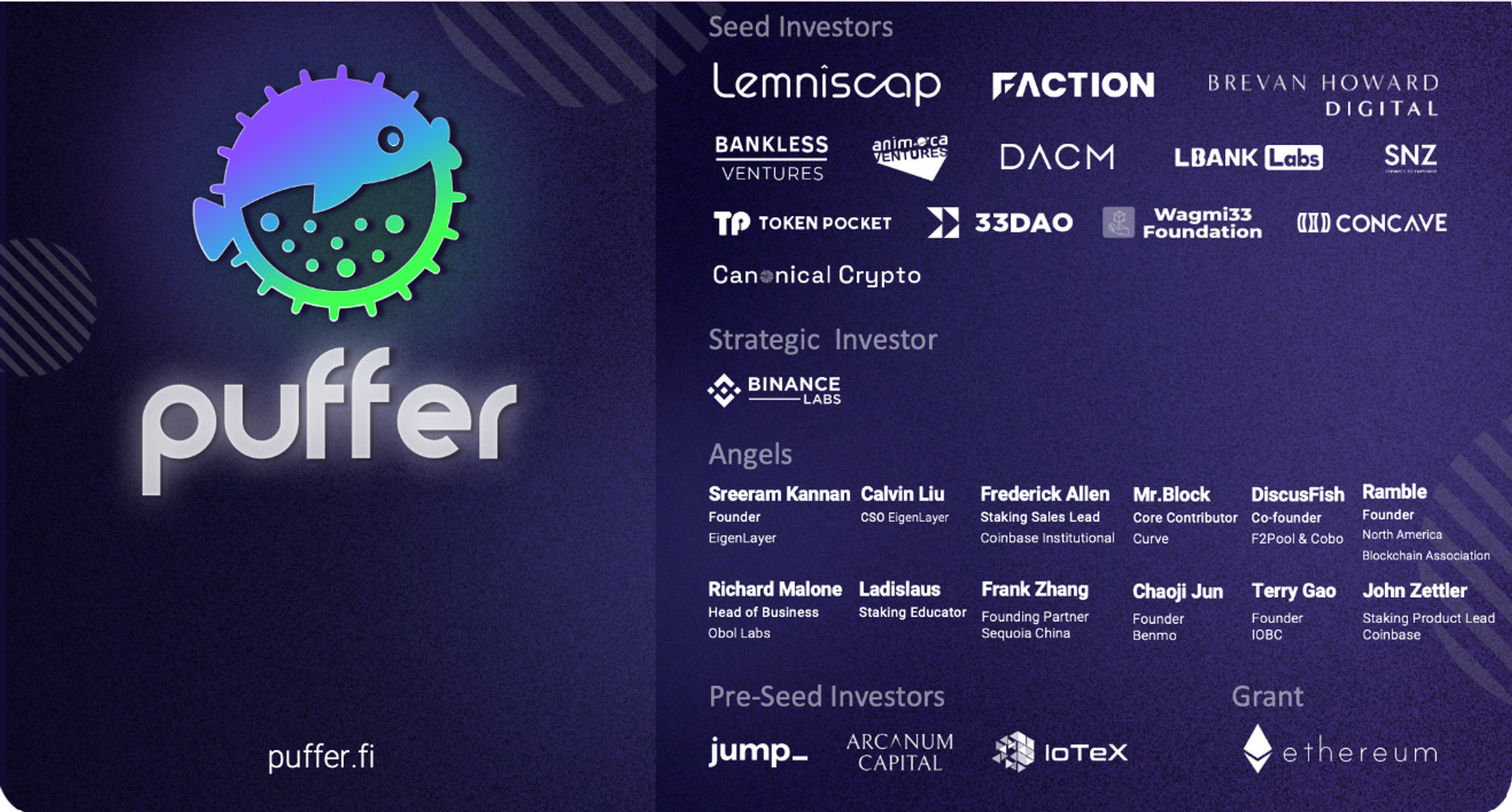
Swell- 66.67%
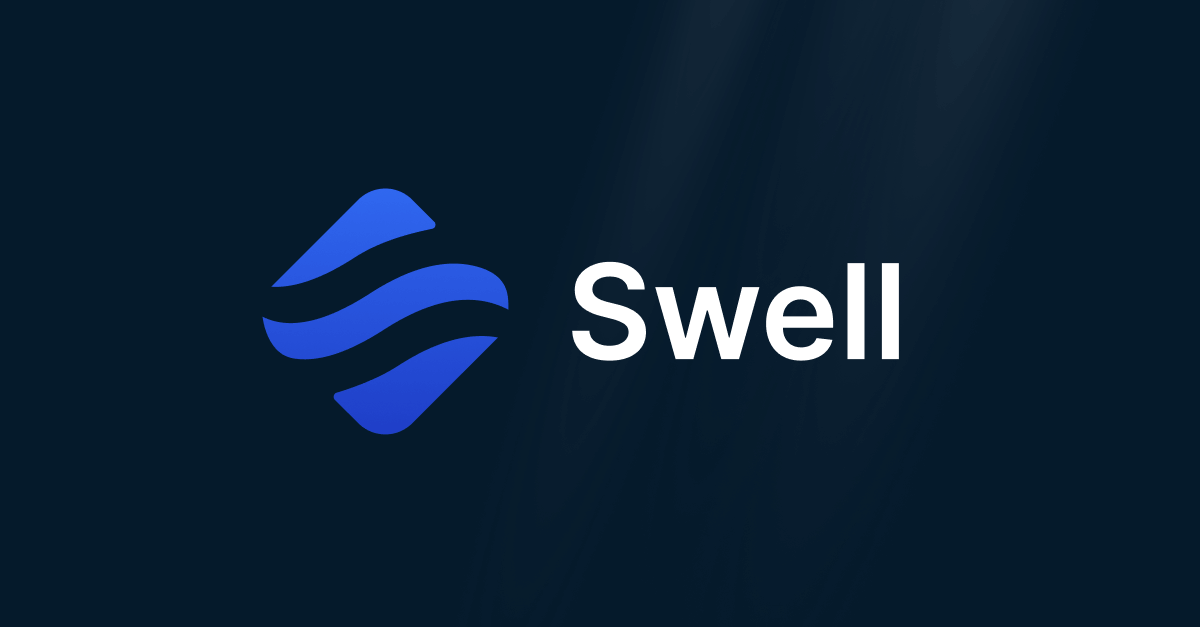 Website | X(Twitter)
Website | X(Twitter)Sector – Liquid Restaking
Status – Active
TVL – $880M
Swell seeks to provide a streamlined liquid staking solution on the Ethereum network, with the dual goals of improving accessibility to decentralized finance (DeFi) and bolstering Ethereum’s security. This platform enables users to stake ETH, earn blockchain rewards, and acquire a liquid staking token (LST) that facilitates deeper involvement in the DeFi ecosystem. Swell’s innovation lies in its ability to eliminate the 32 ETH minimum staking requirement, simplify the technical aspects, and mitigate centralization risks commonly associated with conventional staking methods. This is achieved by introducing a non-custodial liquid staking system, where staked ETH is represented by transferrable swETH tokens, ensuring users retain control over their assets while participating in staking.
Swell’s liquid staking mechanism redefines the participation framework by separating economic participants (stakers) from technical participants (node operators). Stakers are able to contribute any amount of ETH, represented by swETH tokens, eliminating the conventional 32 ETH requirement for validator node setup. The swETH token, an ERC-20 token, embodies the user’s staked ETH alongside any accrued rewards or penalties from the consensus layer, increasing in value as rewards accumulate. This approach enhances the liquidity of staked assets, as swETH can be utilized within the broader DeFi ecosystem, including lending, borrowing, or collateral use.
The system design of Swell encompasses critical functions such as onboarding validators, staking, and reward distribution to end users, node operators, and the Swell DAO. Initially, the platform will operate with a permissioned group of professional node operators, with plans to transition to a permissionless setup in future iterations. When users stake ETH, swETH is minted and sent to them, while the staked ETH is pooled until it reaches a 32 ETH deposit, which is then allocated to a validator.
The exchange rate between swETH and ETH tracks the relative value of total staked ETH, including rewards, against the original amount. Staking rewards are divided into consensus layer rewards (standard ETH issuance for validating transactions) and execution layer rewards (tips and MEV), with the latter being restaked to compound rewards.
Users can exit staking by selling swETH for ETH on a decentralized exchange (DEX), depositing swETH in Swell’s in-protocol vaults for additional yield, providing liquidity, or engaging in lending or borrowing using swETH. Governance of the Swell protocol is entrusted to the Swell DAO, who is responsible for protocol development, node operator onboarding, financial management, and community outreach. The native token, SWELL, is intended for launch to facilitate protocol governance and incentivization schemes, although its final design is yet to be confirmed.
Investors
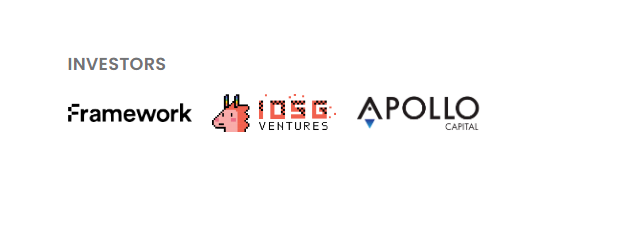
Token
Swell will soon launch it’s token soon. The token will initially serve two key functions within the ecosystem. Firstly, it will enable protocol governance through delegate voting, allowing token holders to participate in decision-making. Secondly, SWELL will incentivize the growth of the protocol by facilitating various liquidity mining initiatives, referral programs, and airdrops, encouraging user engagement and network expansion.
Grass- 66.67%
 Website | X(Twitter)
Website | X(Twitter)Sector – Artificial Intelligence/DePin
Status – Active
Grass is a network designed for selling bandwidth to corporations and institutions, offering a suite of applications that operate discreetly in the background of your phone or computer. This innovative approach allows users to generate passive income by monetizing a resource they may not have realized they possessed.
Wynd Network, the parent company behind Grass, diligently evaluates buyers seeking to purchase bandwidth on the network. Users can rest assured that their data remains private and secure when utilizing the Grass app. Neither Grass nor Wynd Network accesses or utilizes your data. The browser extension provided by Grass also maintains this commitment to privacy by not accessing any private data on your computer. Users can confidently use Grass, knowing that their personal data is protected.
The demand for internet bandwidth spans various industries, including AI labs. Grass enables users to sell their unused internet bandwidth to carefully vetted companies, including Fortune 500 firms, colleges, and universities. This secure and transparent platform offers users a reliable way to monetize their underutilized resources.
Early adopters of Grass not only receive rewards for selling their unused bandwidth but also acquire a stake in a prospective network that has the potential to index the entirety of the web.
How to use Grass?
To utilize Grass, individuals are required to download the Grass extension and register using their email address. While it is possible to download Grass on multiple devices, if all devices are connected to the same Wi-Fi network, the user will receive a divided allocation of 24 hours of uptime among all accounts on that network.
Investors

Massa Labs- 64.58%

Website | X(Twitter)
Sector – Layer 1
Status – Testnet
Massa is a Layer 1 blockchain addressing the scalability, decentralization, and security trilemma without compromise. With a focus on DeFi and web3, Massa introduces innovative features such as a unique Proof-of-Stake consensus mechanism, parallel block architecture, and Autonomous Smart Contracts (ASCs).
Features
- Scalability and Performance – One of Massa’s key features is its scalability and performance. It achieves high transaction speeds through its parallel block architecture, which allows for the creation of blocks in parallel threads. This multithreaded block graph structure ensures scalability while organizing blocks into a complex spatio-temporal structure, further enhancing block creation performance.
- Consensus Mechanism – The blockchain’s consensus mechanism is novel and based on Proof-of-Stake, which not only enhances security and decentralization but also addresses scalability concerns.
- Autonomous Smart Contracts (ASCs) – Massa introduces Autonomous Smart Contracts (ASCs), which can autonomously execute various operations based on configured events, such as price changes. These ASCs eliminate the need for external centralized bots, revolutionizing DeFi by enabling truly autonomous operations.
- Smart Contract Language – Smart contracts in Massa are written in TypeScript, which compiles to WebAssembly bytecode (wasm). This choice of programming language makes smart contract development accessible to a wide range of developers familiar with TypeScript.
- On-Chain Web Hosting – Massa aims to host entire decentralized applications (dApps) on its blockchain, reducing reliance on centralized services. Users can browse and interact with dApps directly on the blockchain without the need for centralized intermediaries, thereby enhancing security.
- Massa Station – Massa Station serves as the gateway to the Massa Blockchain, providing a desktop application that offers an intuitive way to interact with the blockchain through a web browser.
Investors
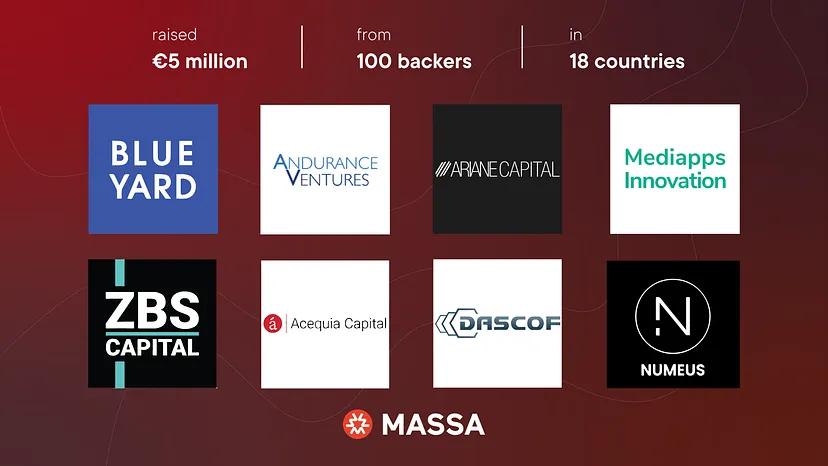
Token
Massa has implemented a unique tokenomics model that prioritizes fairness and decentralization. Massa is steadfast in its commitment to upholding high standards of decentralization, aiming to achieve a Nakamoto coefficient of over 1,000. This goal is set to ensure that control and decision-making authority are dispersed widely throughout the community. The total initial token supply of Massa is 1 billion tokens. The Massa token serves to access the platform and participate in staking activities.

